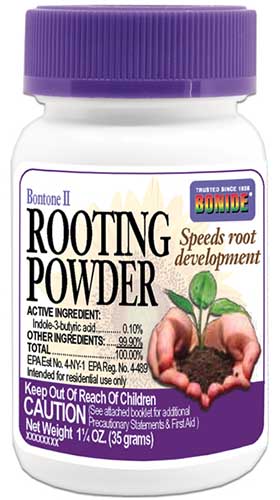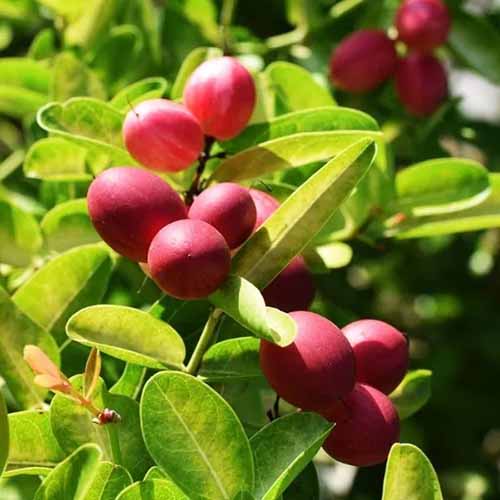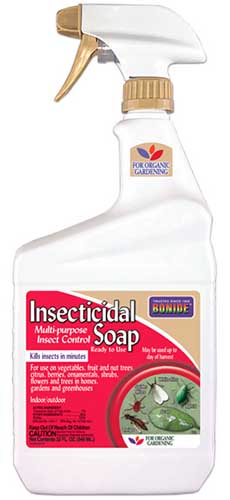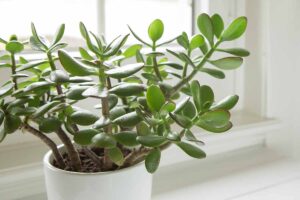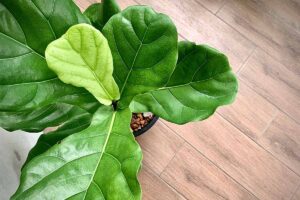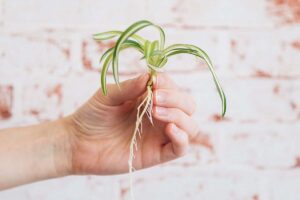Synsepalum dulcificum
True to its name, miracle fruit performs a seemingly miraculous trick every time you eat it.
Consuming just one berry transforms the flavor of sour, bitter, and metallic tastes into sweet ones, as well as boosting the flavor of food in general. What is behind this magic trick?
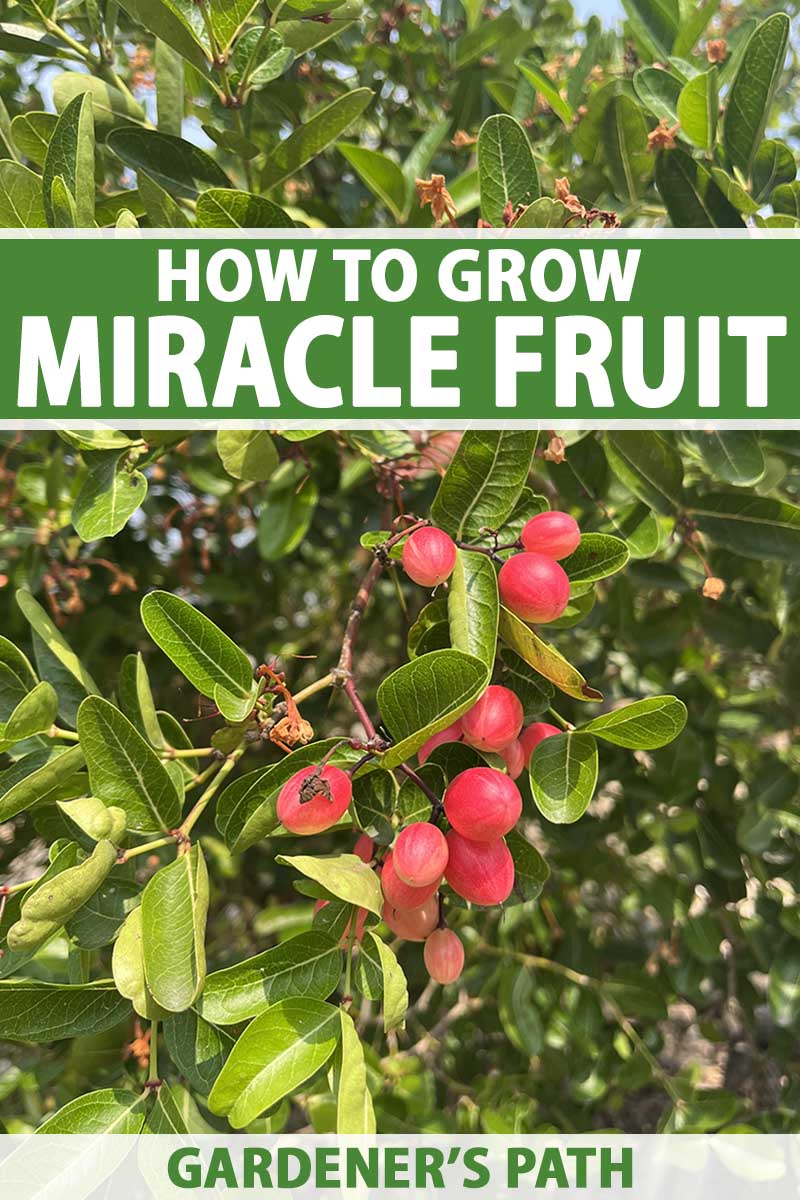
We link to vendors to help you find relevant products. If you buy from one of our links, we may earn a commission.
The pulp in the miracle fruit berry contains a glycoprotein called miraculin which changes the taste receptors on your tongue – effectively blocking the sour and bitter receptors so only the sweet ones remain active.
Though the fruit’s pulp is not especially sweet, everything you taste for about 30 minutes to an hour afterwards will be – even water!
Read on to learn everything you need to know to grow this amazing plant yourself.
What You’ll Learn
What Is Miracle Fruit?
Originally found in several West African countries extending from Ghana to the Congo, miracle fruit can grow outdoors in USDA Hardiness Zones 10 to 11. And you can easily grow it indoors or in a greenhouse in cooler regions.
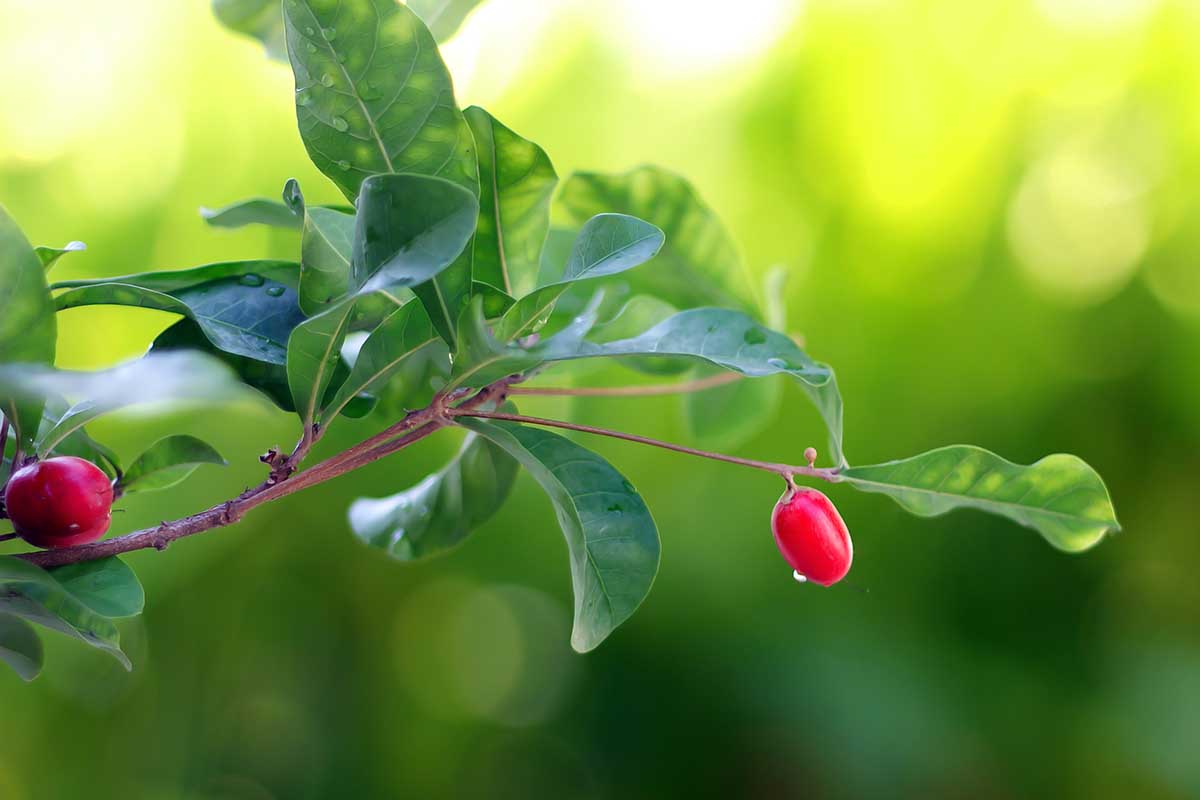
Miracle fruit also goes by the common names of miracle berry, sweet berry, and miraculous berry. And confusingly, it shares its common name with another, unrelated plant also called the sweet prayer plant (Thaumatococcus daniellii).
Miracle fruit belongs to the Sapotaceae family whose members include other pan-tropical trees like sapodilla, star apple, and those used to produce shea butter and argan oil.
This neat plant has aesthetic qualities too. Its evergreen foliage is made up of beautiful curved or flat leaves, each shaped like a pear.
Add to this the petite self-fertile white flowers it produces from spring to fall, sometimes alongside the brilliant red berries, and you have a dazzling sight!
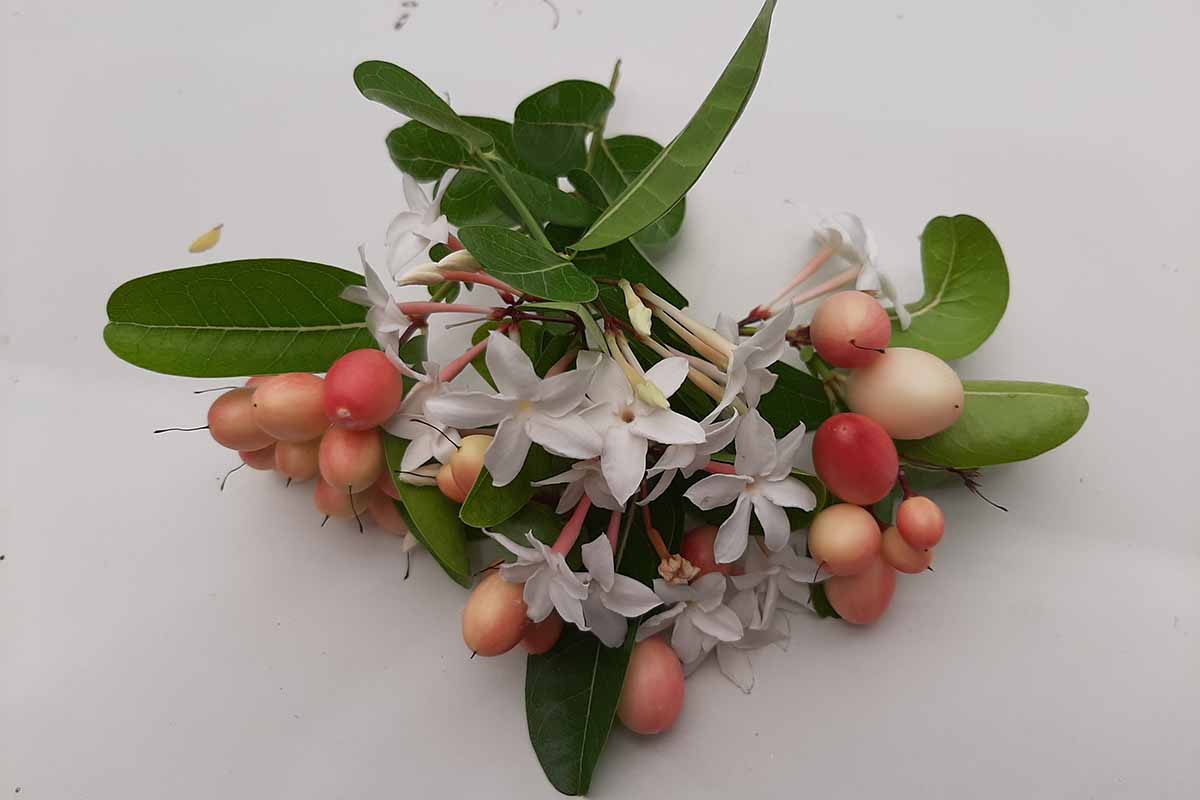
The miracle fruits are egg-shaped berries just shy of an inch long and half an inch wide.
A large seed takes up most of this space and the rest is a white pulp which contains the protein known as miraculin.
Grown outdoors, the miracle fruit plant can grow up to 15 feet tall with an eight-foot spread, but indoors, in a container, you can expect it to top out at just four feet tall and three feet wide, with many specimens staying more compact.
Cultivation and History
From “flavor tripping” parties to conspiracy theories and a rock star endorsement, these days miracle fruit has quite the reputation!
Despite its popularity in some spheres, it remains an under-researched and underutilized fruit with potential in many spheres of contemporary life.
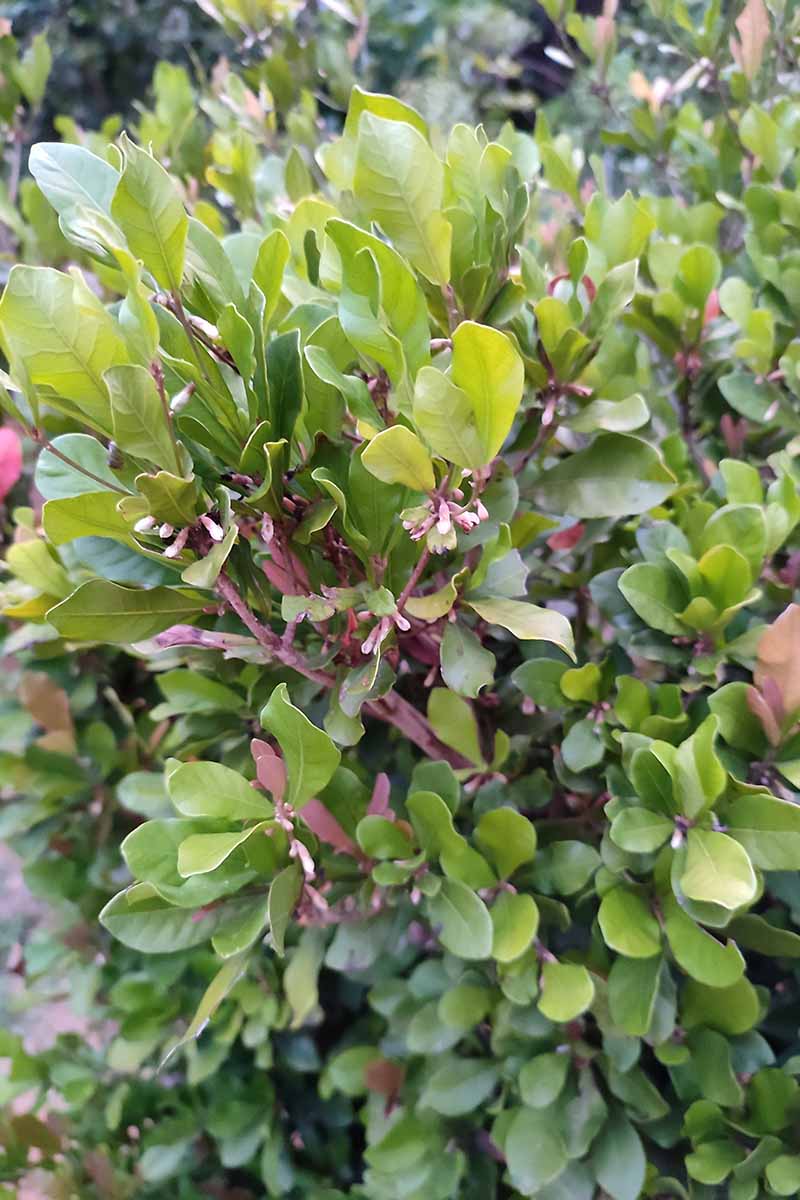
Before we look at its value today, let’s explore miracle fruit’s past.
Although West Africans have used miracle fruit to enhance the flavor of food and drink for many years, Europeans first learned about the plant in 1725 from French explorer Reynaud Des Marchais.
In 1852, the chemist William Freeman Daniell studied the fruit, and reporting on its unique ability in scientific literature, he called it the “miraculous berry.”
In 1968, Japanese scientist Kenzo Kurihara finally discovered the mechanism responsible for miracle fruit’s seemingly magical powers when he isolated the glycoprotein miraculin, the substance responsible for altering taste.
Not long after, Robert Harvey, then completing his biomedical postgraduate studies, wanted to capitalize on this finding by selling extracts from the berry as a low-calorie sweetener to diabetics.
But in 1974, on the evening before the product was to be put on the market, the US Food and Drug Administration (FDA) suddenly banned the product citing that more testing was needed.
This action by the FDA plus a number of events leading up to it propelled conspiracy theories asserting the involvement of the Sugar Association in miracle fruit’s demise.
We’ve come full circle and today, researchers are studying the berries as a sugar alternative for those suffering with diabetes.
Additionally, the fruit’s ability to eliminate metallic flavors experienced by chemotherapy and COVID-19 patients is being examined.
Miracle Fruit Propagation
You can propagate miracle fruit plants from seed, which is a reliable method, but requires patience as the seedlings are slow growing.
Starting from cuttings is also possible, but it also takes time.
The easiest way to get started is to purchase a potted plant for your home.
From Seed
If you have an existing plant, you can collect the seeds from the berries and propagate them.
However, you’ll need to work fast as the germination rate quickly decreases after separating the seed from the pulp. Do not try drying the seeds, as they will not be viable.
After harvesting the berries, simply clean the seed by removing all the pulp.
Using a pre-moistened and well-mixed blend of equal quantities of peat moss and perlite, sow the seeds a quarter of an inch deep in containers or a propagating tray.
Cover your containers with a plastic bag or a dome to increase humidity.
Maintain a temperature between 73 and 86°F (23 to 30°C) and place your seeds in indirect light. Keep the potting medium evenly moist but not waterlogged.
In these conditions, they should germinate in a few weeks.
From Cuttings
If you want to experiment, you can attempt to propagate miracle fruit through cuttings.
But this method takes longer than propagating by seed and has a lower chance of success because this species doesn’t grow adventitious roots easily.
Take a four-inch (10-centimeter) softwood cutting with a few nodes and two to five leaves. Defoliate the bottom two inches.
Dip one inch of the defoliated end into a powdered rooting hormone such as Bonide Bontone II, available from Arbico Organics.
Bonide Bontone II Rooting Powder
For the propagation media, use coconut fiber on its own or a mixture of perlite and peat moss. Put the medium inside a four-inch pot with drainage holes.
Using a pencil, make a hole in the potting medium and plant the cutting one to two inches deep.
Place the pot in a location with bright, indirect light. Keep the potting medium moist but not waterlogged. You can maintain humidity by securing a plastic bag over the pot or setting it under a humidity dome.
You can check for rooting by removing the plastic bag and giving the cutting a gentle tug. If you feel resistance, you’ll know that roots have formed.
When your cuttings root, transplant them into larger pots, approximately two inches bigger than the rooting pot.
How to Grow Miracle Fruit
Now that you’ve learned a bit about miracle fruit, let’s dive into how to take care of this special plant.
When you first bring your miracle plant home, you may wish to transplant it into a different pot.
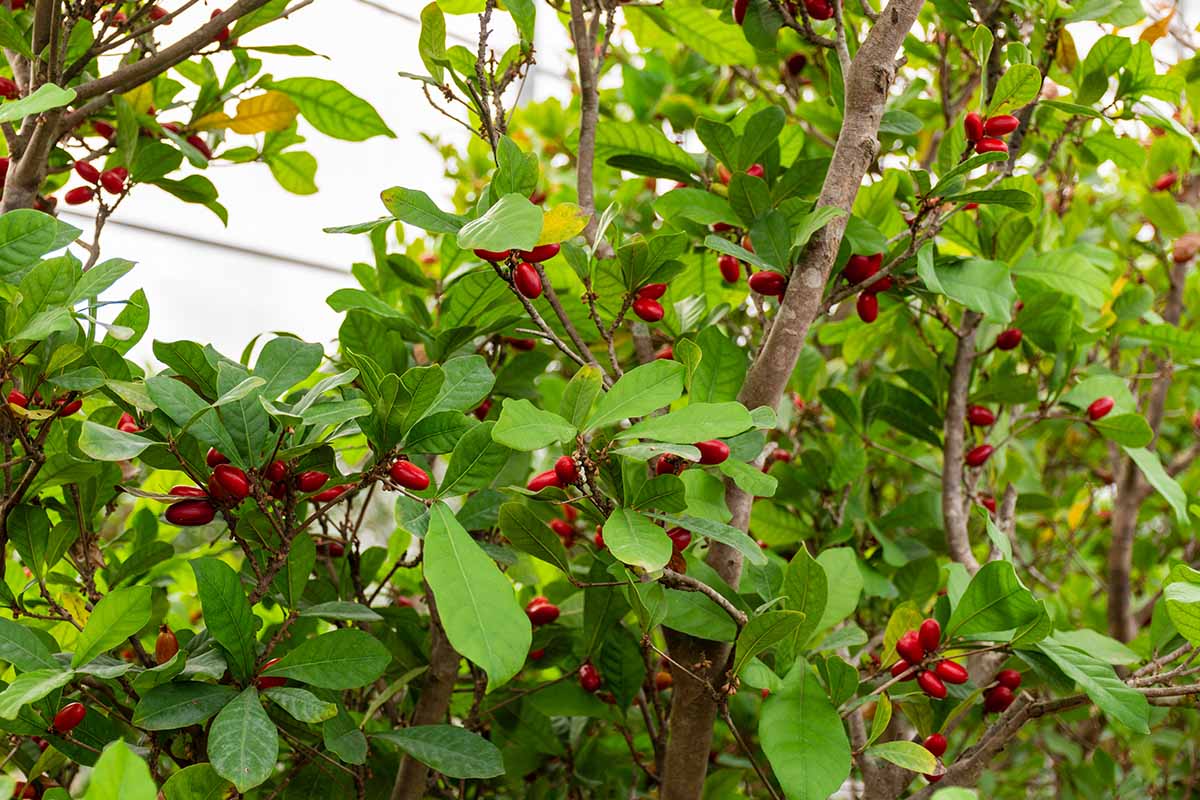
Choose a container that has holes at the bottom for drainage, and that’s about two inches wider and taller than the existing pot. You’ll likely need to increase the size of the pot every two years or so.
You’ll also want a saucer to place underneath the pot to catch water as it drains out.
Miracle fruit needs acidic soil with a pH of 4.8 to 5.5, so a half-and-half mix of peat moss and perlite – or peat moss and silica sand – is ideal. If you opt for the latter, make sure the silica has a neutral pH – those made from limestone will be more alkaline.
S. dulcificum grows outdoors in USDA Hardiness Zones 10 to 11, so it doesn’t appreciate temperatures lower than 35 to 40°F. Indoors, keep it between 60 and 90°F in a location with bright, indirect light.
And when the temperature outside is agreeable, you can move your plant outdoors for the summer months if you wish.
These plants are finicky when it comes to watering. They react badly to tap water – whether that is because tap water is treated or because it has a high pH value – the jury is still out. It’s best to use rainwater or filtered water instead.
Miracle fruit needs consistent moisture but the potting mix shouldn’t be allowed to become waterlogged.
When the top two inches of soil are dry, it’s time to water. Water deeply until liquid runs out of the bottom of the pot, and remember to empty the saucer afterwards!
And because its natural habitat offers a lot of humidity, you can recreate this environment by misting your plant once a week.
Pollination
Miracle fruit plants are self-fertile, so you only need one plant for successful pollination and fruit set. That being said, if you have two, you may get a larger harvest.
Similarly, putting your plant outside during flowering (if the temperature allows!) will enable insects and the wind to increase pollination.
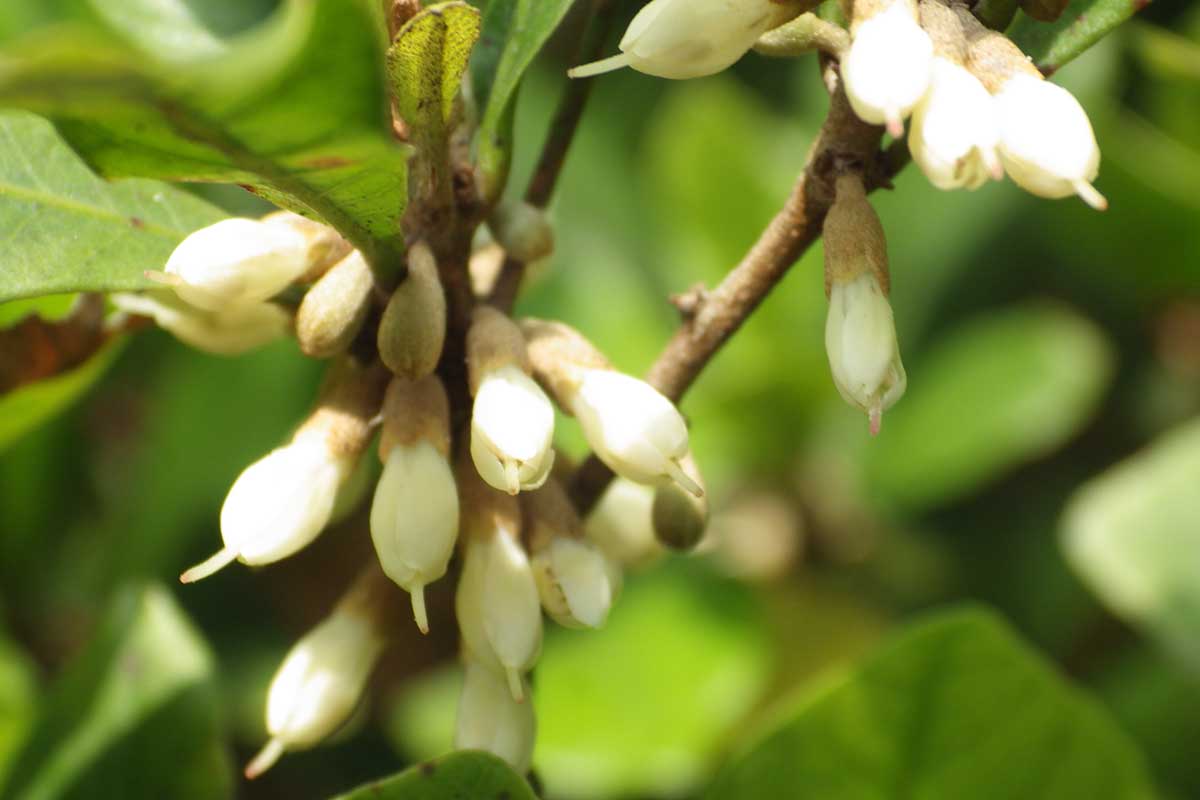
Indoors, you can hand-pollinate your plant by manually transferring pollen between flowers with a cotton swab or paintbrush. If you’re short on time, you can gently jiggle your plant or caress its leaves and branches to encourage pollination.
If successfully pollinated, you can expect fruits three to six weeks after flowering.
Indoors, miracle fruit will generally flower twice between May and October. Planted outside in suitable regions, it can flower all year round for a continual harvest.
Indoors it will not typically produce fruit from November to April, but will retain its leaves and may continue to grow.
Growing Tips
- Provide acidic, well-draining potting mix.
- Grow in bright direct or filtered sunlight indoors and partial shade to full sun outdoors.
- Keep soil consistently moist, but not oversaturated.
Pruning and Maintenance
Miracle fruit plants don’t necessarily need to be pruned unless you want to create a particular shape or size, or there is evidence of damage or dying branches.
The best time to prune is after fruiting is done for the year. Even then, keep your pruning light.
Container-grown plants will only reach two to four feet tall and one to three feet wide. If you want to keep your plant compact, prune off the top branches. This will encourage the side branches to fill in and stimulate flowering.
Regular fertilization is essential for fruit set and plant health, but you’ll have to be careful not to overfertilize as this can damage the roots.
Feed your miracle fruit plant with a water-soluble 20-20-20 fertilizer about once a month. Make sure to only apply fertilizer when the soil is wet, as this helps prevent any potential damage to the roots.
If your plant outgrows its current container you can repot into a larger vessel as needed and refresh the potting mix, normally every one or two years.
Where to Buy
You can sometimes find plants available at local nurseries, particularly in regions like Florida where they can grow outdoors. Otherwise, online nurseries can ship to your door.
You can find a miracle plant that is between 18 months and two and a half years old in a #1 container from Nature Hills Nursery.
Or you can find a specimen in a three-gallon pot available from Fast Growing Trees.
There are a number of S. dulcificum cultivars, but they can be difficult for the home gardener to find.
Researchers Lynhe Demesyeux, Maria Brym, and Alan H. Chambers at the University of Florida studied the qualities of various cultivars in their research on S. dulcificum.
The top picks are the cultivar known as ‘Cherry’ which boasts the largest fruit with the most pulp, as well as ‘Cardinal’ and ‘Imperial’ which produce the most fruit per season.
Other solid choices are ‘Scarlet,’ and ‘Vermilion’ which exhibit high fruit pulp weight which equals more miraculin – and therefore more fun!
Managing Pests and Disease
Fortunately, miracle fruit has a natural resistance to many diseases – but it can’t evade the notorious root rot.
Grown as a houseplant, it will be susceptible to many of the same pests that affect other indoor plants including scale, mealybugs, and spider mites.
Pests
You might find the following pests like your miracle fruit plant just as much as you do! Here’s what to watch out for and what to do if you find them.
Mealybugs
The first sign of these little critters will usually be a cotton-like white wax in the leaf axils or other protected places.
Mealybugs cause damage by sucking sap from the plant, A large infestation may eventually result in the death of the plant. The honeydew they exude can lead to sooty mold.
In the case of a small infestation, a cotton swab doused in rubbing alcohol can be used directly on the mealybugs to kill them.
A substantial number of mealybugs can be dealt with by using an insecticidal soap suitable for indoor use.
You can find Bonide Insecticidal Soap available from Arbico Organics.
Learn more about mealybugs in our guide.
Scale
Scale are sap-sucking insects that can wreak havoc on your plant and may be hard to detect until there is an army of them.
Signs of a heavy infestation include yellow leaves, distorted foliage, and branch dieback.
The simplest way to battle these little tough guys is to remove them manually from your plant. You can do this by spraying with water and using a soft brush to dislodge them. If some branches are heavily infested, it’s best to prune them off.
If your miracle fruit becomes infested with scale and the temperature is warm enough outside, you can try putting your plant outdoors and allow beneficial predators to eat the scale.
Lady beetles and parasitic wasps will be some key allies in this regard.
Unfortunately, a heavy infestation that has done significant damage is likely not worth the time and effort to treat, so you may be better off starting with a new plant.
You can learn more about scale and how to deal with it in our guide.
Spider Mites
Spider mites are tiny arachnids that come in various colors and can reproduce rapidly. Sadly, for miracle fruit living indoors, they can be a problem any time of the year.
What they’re after is the chlorophyll from leaves so you’ll see white spots or specks on the foliage. In the case of a heavy infestation you may see webbing and yellow, brown, or dead leaves.
You can get rid of spider mites by spraying the plant with water, especially the lower leaves. If necessary you can use an insecticidal soap.
Our guide has more information about how to manage spider mites.
Disease
When it comes to disease, the main one to keep an eye out for is root rot.
Root Rot
Various soilborne fungi and water molds (oomycetes) are responsible for root rot. Many plants are susceptible to this disease, and miracle fruit is no different.
You may see the leaves turn yellow and brown or die back and wilt. Or the bark may turn black and the plant’s growth may be impacted.
These pathogens favor moist conditions and overwatering is a common cause of infection. Once root rot takes hold, it is difficult to save the plant.
Avoid root rot by taking care to water when the top two inches of soil is dry and ensure that your plant is growing in a well-draining potting medium.
Harvesting
As long as you meet its needs, miracle fruit will reciprocate with a bountiful harvest twice a year. Depending on your climate, this may be in spring, summer, or fall.

When the berries turn red, wait another week or so before picking them and they’ll be at their juiciest. How you harvest the berries will depend on when you wish to eat them.
If you want to eat them right away, gently pull the berry from the stem. If you want to keep the berry fresh for a few days before eating it, cut off one inch of the branch with the berry on it.
Expect a small crop starting in the plant’s second to third year, with the biggest production being in the fifth year.
And if you don’t want to enjoy its taste-altering tricks immediately, you can preserve the berries either by freezing or freeze drying.
Unfortunately, the miraculin protein that gives the berries their power does not remain stable when heated.
Best Uses of Miracle Fruit
The best way to enjoy miracle berries is as they’ve been eaten for centuries – straight off the bush before a meal containing sour or bitter foods.
But why eat them alone when you can introduce them to your friends and family, too?
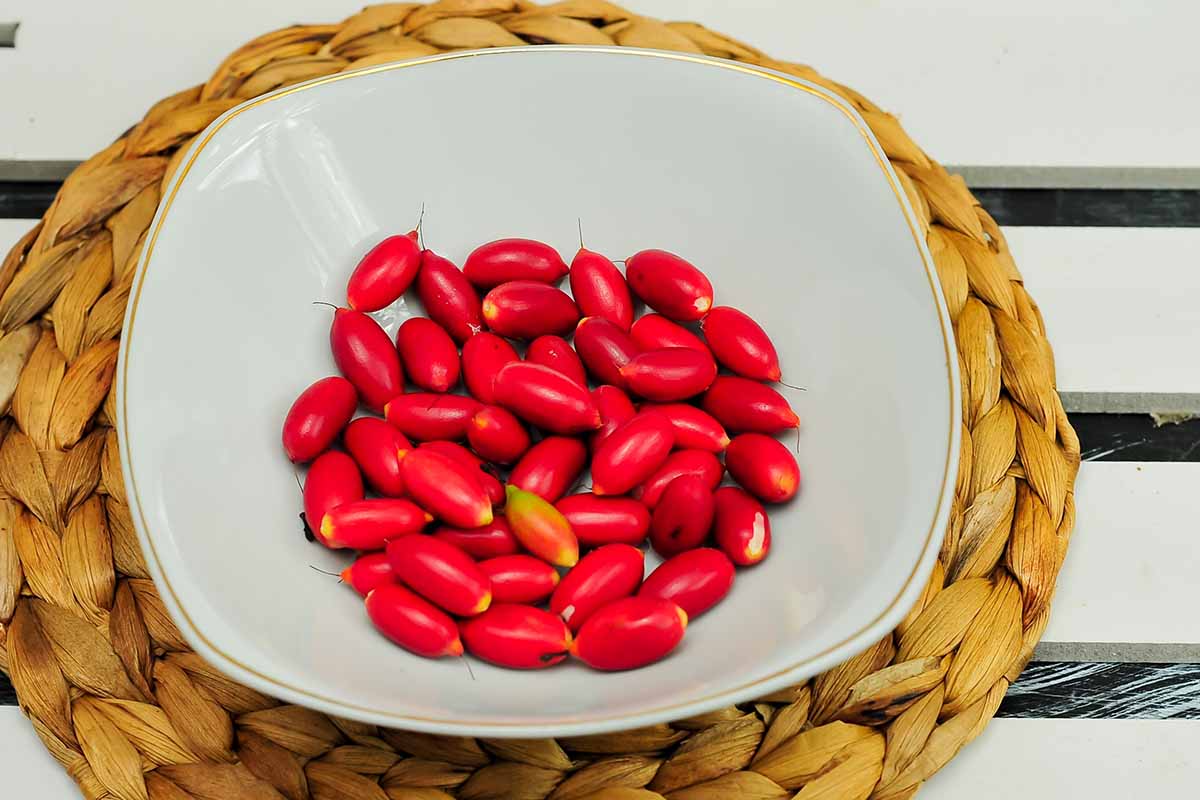
Miracle berries became quite the hit just over a decade ago when the idea of “flavor tripping” parties became popular.
In a nutshell, you eat the berries with your party guests and then taste an array of sour and bitter foods for a flavor-altering experience.
Here are some things to remember about eating miracle berries to get the best effect. First, try to coat your whole tongue with the pulp so that all your taste buds are coated with miraculin. Otherwise, you might still taste some of the original sour or bitter flavors.
Also, don’t drink too much liquid while trying various foods since this will wash the miraculin protein off.
Finally, don’t overdo it with the acidic foods! Although they will taste sweet, these are still naturally acidic foods and may bother your stomach if you eat too much.
Some especially fun foods to try include lemons and other citrus fruits, goat cheese, sour dill pickles, tabasco sauce, and salt and vinegar flavored chips.
Quick Reference Growing Guide
| Plant Type: | Woody shrub | Flower/Foliage Color: | White/green |
| Native to: | West Africa | Water Needs: | Moderate |
| Hardiness (USDA Zones): | 10-11 | Maintenance: | Moderate |
| Season: | Summer to fall indoors, year-round outdoors | Tolerance: | Some drought |
| Exposure: | Bright, indirect light (indoors); part shade to full sun (outdoors) | Soil Type: | Soilless mix of peat moss and perlite |
| Time to Maturity: | 2-3 years to fruit | Soil pH: | 4.8-5.5 |
| Planting Depth: | Same depth as container | Soil Drainage: | Well-draining |
| Height: | 2-4 feet (indoors), up to 15 feet (outdoors) | Uses: | Berries used to alter the flavor of food, ornamental houseplant |
| Spread: | 1-3 feet (indoors), 6-8 feet (outdoors) | Family: | Sapotaceae |
| Growth Rate: | Slow | Genus: | Synsepalum |
| Common Pests and Diseases: | Mealybugs, scale, spider mites, root rot | Species: | Dulcificum |
The Ultimate Dinner Party Guest
Miracle fruit is a very special houseplant. Not only does it provide you with a bountiful harvest and a unique taste perception experience, it’s also an ornamental evergreen that provides beauty to your home year-round.

I can’t think of a better dinner party opener than “Do you want to alter the flavor of your meal tonight?”
Growing your own miracle fruit gives you the opportunity to introduce this magical plant to your friends and family, and maybe even get them interested in gardening too!
If you’ve had the pleasure of growing this taste-altering fruit, let us know in the comments section below.
And for more information about growing houseplants, check out these guides next:
